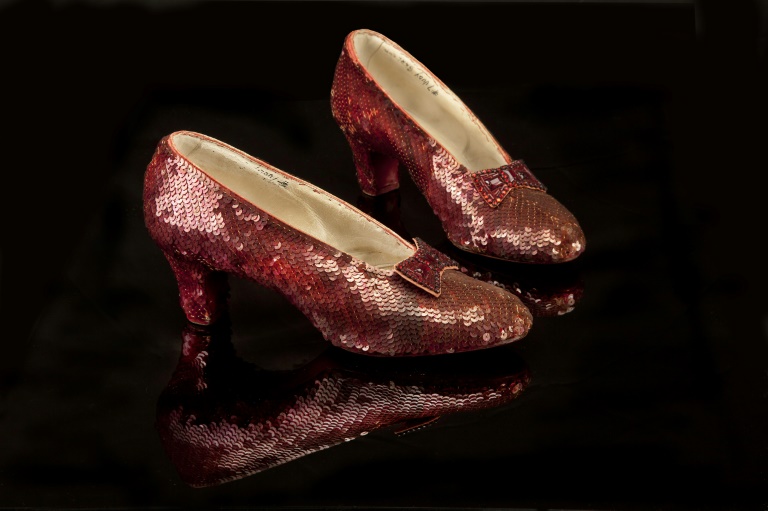An elderly US man pleaded guilty Friday to the theft nearly 20 years ago of a pair of ruby slippers that Judy Garland wore in the classic film “The Wizard of Oz.”
The sequined shoes — indelibly associated with the character Dorothy clicking them together and saying repeatedly, “there’s no place like home” — were stolen in 2005 from the Judy Garland Museum in the actress’s hometown of Grand Rapids, Minnesota.
The footwear was recovered in an FBI sting in 2018 and Terry Martin, 76, was charged with the theft in May this year.
Martin pleaded guilty to one count of theft of major artwork, and he remains free until his sentencing date which has not yet been set, the US Justice Department office in North Dakota said.
Martin told a Minnesota court on Friday that he had used a sledgehammer to smash a plexiglass case and stolen the slippers because he mistakenly believed they were made with valuable ruby gems.
After learning that the “gems” were made of glass when he tried to sell them on the black market, “I didn’t want anything to do with them,” Martin told a federal judge in Duluth, according to the Minnesota-based Star-Tribune newspaper.
Martin did not provide any details on how he had discarded the slippers, and the terms of his plea agreement are sealed.
But prosecutors have recommended that Martin, who appeared in court in a wheelchair with an oxygen tank, does not serve any time in prison.
The slippers are among four pairs that Garland wore during the making of the beloved 1939 film.
They are, the Justice Department said, “widely viewed as among the most recognizable memorabilia in American film history.”
At the time of the theft the shoes were insured for $1 million but their current value is around $3.5 million.
When the slippers were recovered in 2018, they were authenticated by the Smithsonian Institution’s National Museum of American History, which has another of the four genuine pairs.
After the theft, police in Grand Rapids received numerous tips, chief Scott Johnson said in 2018.
One claimed the shoes Dorothy wore on the yellow brick road were nailed to a wall in a roadside diner. Another insisted they were thrown in an iron-ore pit.
“They’re more than just a pair of shoes,” said Johnson at the time. “They’re an enduring symbol of the power of belief.”






